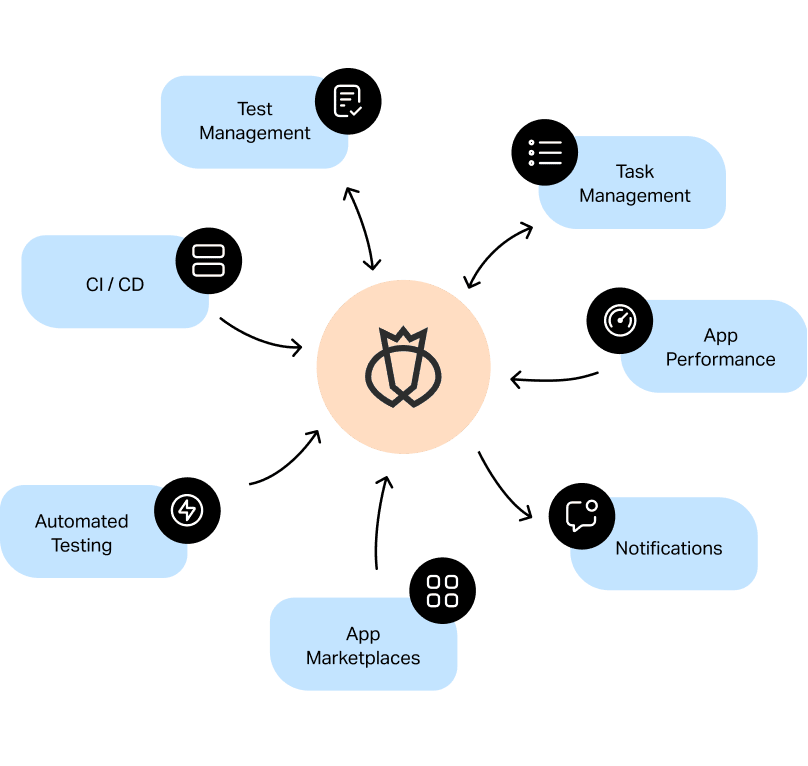Efficient Automation Testing: Enhancing Software Application Dependability and Speed
Efficient Automation Testing: Enhancing Software Application Dependability and Speed
Blog Article
Guaranteeing Success in Automation Testing: Key Metrics, Challenges, and Solutions Every QA Team Must Know
In the world of software application quality control, the landscape of automation testing is ever-evolving, requiring a thorough technique to make sure seamless operations. Key metrics offer as the compass assisting QA teams via the huge surface of examination automation, clarifying development and locations for enhancement. Nonetheless, difficulties loom big, commonly casting shadows on the course to success. By understanding these hurdles and applying effective services, QA groups can navigate through complexities with finesse. The trip to mastering automation screening is led with subtleties that call for a keen eye for monitoring, analysis, and constant enhancement. automation testing. As the sector drives ahead, the quest for optimum performance in automation screening stays a continuous quest, prompting QA groups to outfit themselves with the expertise and techniques important for victory.
Value of Key Metrics
Understanding the significance of essential metrics is necessary for examining the efficiency and effectiveness of automation testing procedures. Trick metrics act as quantifiable steps that give valuable understandings into various aspects of the screening process, such as examination coverage, test execution time, flaw density, and examination instance efficiency. By assessing these metrics, QA teams can determine traffic jams, inefficiencies, and locations for enhancement within their automation screening framework.
One crucial element of vital metrics is their capability to track progression and check the general health and wellness of the testing process (automation testing). They make it possible for stakeholders to make informed choices based upon data-driven understandings, which can bring about a lot more reliable screening techniques and much better source allowance. In addition, key metrics can aid teams established sensible objectives, determine the success of automation initiatives, and show the ROI of automation testing efforts

Usual Obstacles Encountered
Obstacles generally run into in automation screening procedures can significantly impact the overall effectiveness and performance of QA teams. One of the significant difficulties is the option of the right test instances for automation. Not all test situations appropriate for automation, and choosing the wrong ones can cause lost time and resources. Furthermore, keeping test scripts can be a daunting task, especially as the application undergoes constant adjustments. Examination manuscript upkeep calls for continuous updates and modifications to ensure they show the present functionality precisely. Another usual challenge is the initial financial investment required for establishing automation structures and devices. This can be a barrier for some organizations, specifically smaller ones with minimal budgets. Additionally, automation testing may not cover all facets of testing, such as use and user experience screening, which still need manual treatment. Getting rid of these challenges requires appropriate planning, strategic test instance selection, durable upkeep processes, adequate sources, and a clear understanding of the limitations of automation screening.
Reliable Solutions for Challenges
To address the obstacles come across in automation screening, carrying out reliable options is vital for enhancing the performance and productivity of QA groups. One vital option is to purchase durable training programs for QA teams to guarantee they have the required abilities to successfully utilize automation devices. Training can connect knowledge voids, enhance understanding of automation frameworks, and boost scripting abilities, eventually resulting in much more efficient test development and execution.
Another crucial service is to develop clear communication channels within the QA team and with various other stakeholders, such as programmers and job supervisors. Efficient communication aids in lining up expectations, sharing development updates, and without delay addressing problems or obstacles that may occur during the automation testing process.

Surveillance and Analysis Techniques
Applying efficient monitoring and evaluation methods is vital for making sure the success and efficiency of automation testing processes. In addition, examining test results and metrics supplies useful understandings into the quality of the software being examined and the performance of the screening method.
One secret strategy in surveillance and analysis is the usage of control panels that settle pertinent metrics and KPIs in an aesthetically available layout. These dashboards supply a detailed summary of test execution standing, test insurance coverage, issue trends, and various other vital information. Consistently evaluating and analyzing these control panels can help QA groups make notified decisions, prioritize jobs, and optimize screening initiatives.
Additionally, carrying out automated signals and alerts based on predefined thresholds can enhance proactive tracking and timely treatment. By establishing up informs for efficiency deviations or check my blog test failings, groups can deal with problems quickly and stop them from intensifying. Overall, tracking and evaluation methods play a vital function in guaranteeing the performance and success of automation testing efforts.
Continual Improvement Methods
Enhancing the efficacy of automation screening procedures requires the consistent improvement of techniques and techniques. One key technique to enhancing automation screening processes is to perform normal reviews and retrospectives.

Conclusion
In verdict, it is crucial for QA teams to understand the crucial metrics, challenges, and services in automation testing to guarantee success. By thoroughly checking and assessing data, implementing effective options to common obstacles, and continuously boosting strategies, QA groups can optimize their testing procedures and deliver high-quality software. Abiding by these practices will eventually bring about much more reliable and efficient automation screening practices.
By assessing these metrics, QA teams can identify traffic jams, inadequacies, and areas for enhancement within their automation testing structure.
Additionally, key metrics can help groups set sensible goals, gauge the success of automation efforts, and demonstrate the ROI of automation testing initiatives.
Difficulties frequently come across in automation testing procedures can significantly influence the general performance and effectiveness of QA groups. Automation screening may not cover all facets of testing, such as use and user experience testing, article source which still require manual intervention.In verdict, it is vital for QA groups to recognize the essential metrics, obstacles, and solutions in automation visit site testing to make certain success.
Report this page